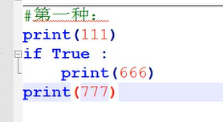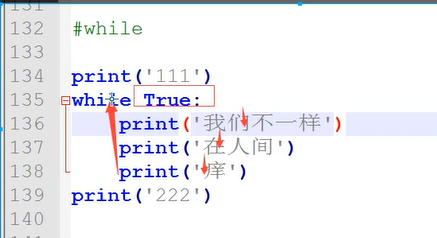1.python2和python3的区别:
宏观上:python2 与 python3 区别:
python2 源码不标准,混乱,重复代码太多,
python3 统一 标准,去除重复代码。
2.python的环境
编译型:一次性将所有程序编译成二进制文件。
缺点:开发效率低,不能跨平台。
优点:运行速度快。
:C,C++等等。
解释型:当程序执行时,一行一行的解释。
优点:开发效率高,可以跨平台。
缺点:运行速度慢。
:python ,php,等等。
3.运行第一个py文件:
python3x :python 文件路径 回车
python2x :python2 文件路径 回车
python2 python3 区别:python2默认编码方式是ascii码
解决方式:在文件的首行:#-*- encoding:utf-8 -*-
python3 默认编码方式utf-8
4.变量。
变量:就是将一些运算的中间结果暂存到内存中,以便后续代码调用。
变量的规范:
- 必须由数字,字母,下划线任意组合,且不能数字开头。
*r = 4 字符不行 ___ = 4 可以
2.不能是python中的关键字。
['and', 'as', 'assert', 'break', 'class', 'continue',
'def', 'del', 'elif', 'else', 'except', 'exec',
'finally', 'for', 'from', 'global', 'if', 'import',
'in', 'is', 'lambda', 'not', 'or', 'pass', 'print',
'raise', 'return', 'try', 'while', 'with', 'yield']
3.变量具有可描述性。 /age = 18 而不是 name = 18/
#下划线
age_of_oldboy = 56
number_of_students = 80
4.不能是中文。 // 中文不会报错//
5. 最好不要太长!

1 age1 = 12 2 age2 = age1 3 age3 = age2 4 age2 = 100 5 print(age1,age2,age3)
# 答案 12 100 12
7.常量。
一直不变的量。 π // 不能用拼音写//
BIR_OF_CHINA = 1949
8.注释。
方便自己方便他人理解代码。
单行注释:#
多行注释:'''被注释内容''' """被注释内容"""
9.用户交互。Input (交互式)
1.等待输入,
2.将你输入的内容赋值给了前面变量。
3.input出来的数据类型全部是str

10.基础数据类型初始。
数字:int 12,3,45
+ - * / **
% 取余数
ps:type() 判断方法
print(100,type(100)) print('100',type('100'))
Python2中有long python3 中全是int 没有long类型
字符串转化成数字:int(str) 条件:str必须是数字组成的。
数字转化成字符串:str(int)

字符串:str,python当中凡是用引号引起来的都是字符串。
可相加:字符串的拼接, 但是不能相减
可相乘:’字符串’可以数字相乘 str * int
msg = """ /'''
今天我想写首小诗,
歌颂我的同桌,
你看他那乌黑的短发,
好像一只炸毛鸡。
"""/'''
#print(msg) 可以这样
bool:布尔值。 True False。 首字母大写 不加引号

11.If条件语句
if (空格)条件:(冒号前面的是条件 后面是结果 冒号的作用就是让条件和结果分开)
(缩进4个空格)结果

不会报错 777不在if语句里面 直接输出
1.#第一种
if 4 > 5 : print('我请你喝酒') print('喝什么酒') #第二种: if 4 > 5: print('我请你喝酒') else: print('喝什么酒')
不管if成不成立 都出输出 喝什么酒
第二种是做选择 行就直接if 不行走下面
2
num = input('请输入您猜的数字:') if num == '1': print('一起抽烟') elif num == '2': print('一起喝酒') elif num == '3': print('新开了一家,走看看') else: print('你猜错了.....')
Input出来是字符串 下面的都是要‘’ 不可以直接打1
// 两个等于是比较 一个是赋值//
3
score = int(input("输入分数:")) if score > 100: print("我擦,最高分才100...") elif score >= 90: print("A") elif score >= 60: print("C") elif score >= 80: print("B") elif score >= 40: print("D") else: print("太笨了...E")
//elif 代表分支 多选 //
4
name = input('请输入名字:') age = input('请输入年龄:') if name == '小二': if age == '18': print(666) else: print(333) else: print('错了....')
12,while循环
while 条件:

222不输出
循环体 ------无限循环。
终止循环的2个方法:1.改变条件,使其不成立。
2.break ---- 立马中断 跳出循环
count = 1 flag = True #标志位 while flag: print(count) count = count + 1 if count > 100 : flag = False count = 1 while count <= 100: print(count) count = count + 1 count = 1 sum = 0 while count <= 100: sum = sum + count count = count + 1 print(sum)
Continue-----结束本次循环 不结束整体循环
count = 0 while count <= 100 : count += 1 if count > 5 and count < 95: continue print("loop ", count) print("-----out of while loop ------")

